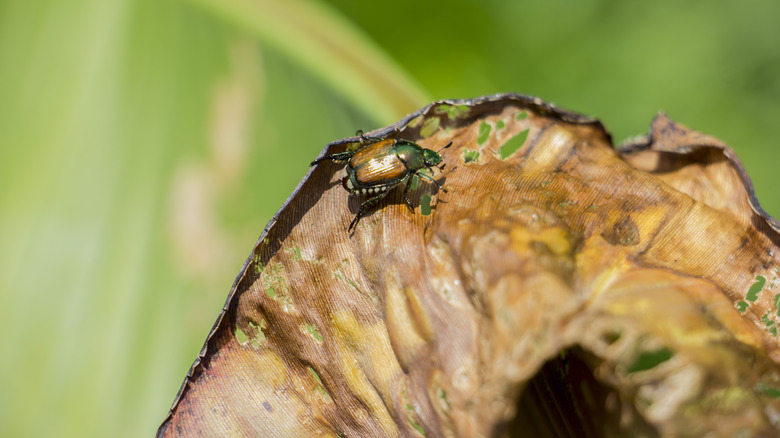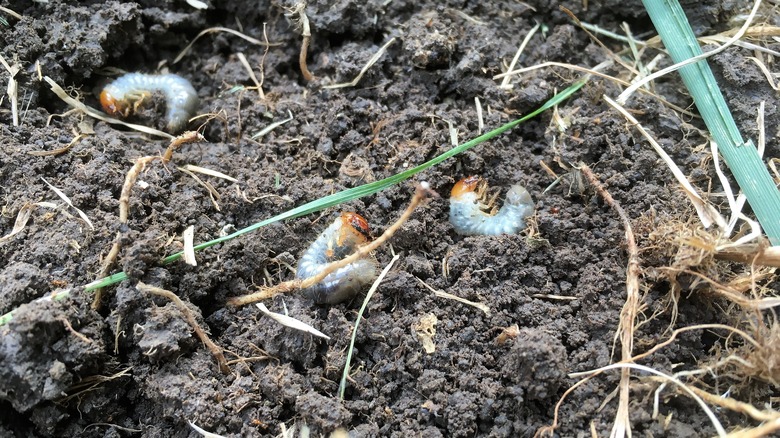Japanese beetles might be considered cool-looking if they weren’t so destructive to your hydrangeas (and many other nearby plants). In fact, these pests are one of the main reasons you might want to think twice about planting hydrangeas in your garden. The metallic green and brown beetle will have you running for the nearest poison since they can tear your flowers apart bite by bite. Beetle outbreaks can also seem impossible to eliminate since the larvae hide out in the soil, often unbeknownst to you.
Before you pick up a heavy-duty pesticide, try squishing a few beetles and leaving their carcasses to rot. The stench might make you stay away, and that’s exactly what will happen to the other beetles. It turns out these insects don’t like the sight or smell of their fallen comrades. They hate it so much that it can effectively repel other beetles from landing on your beloved hydrangeas. You do have to allow a few of them around so you can kill them, but after that, you shouldn’t see as many in the area.
Don’t discard every dead beetle

When you spot a Japanese beetle crawling around on your hydrangeas, kill it, but don’t discard it. You can squish, step on, whack, or drop it into a cup of soapy water until it dies. Then, place its body around your hydrangeas to warn other beetles that danger is near. You can leave the beetles where you killed them or collect them in a container and place them by your plant in an inconspicuous area.
One beetle may not be enough, but that doesn’t mean you have to put together an entire graveyard. Japanese beetles don’t smell good to humans either, so there’s no need to subject yourself to a stench near your beautiful flowers. One way to mask the smell is to add the dead beetles to carbon-heavy compost and distribute it around your hydrangeas. Carbon (leaves, paper, wood) helps hide the smell that comes from the beetle bodies releasing ammonia.
Using dead beetles with other methods

While dead Japanese beetles make a good deterrent for others, they aren’t always foolproof. Pairing them with additional methods can help you reduce the population of pests in your yard by attacking them from different angles. While dead beetles deter adults, you can make the lawn unattractive and uninhabitable to grubs by keeping the grass long, watering deeply and less frequently, and letting it go dormant in early summer. You can use insecticidal soap for young, soft-bodied beetles, but it won’t be effective for adults.
A method you shouldn’t use is Japanese beetle traps. The traps are designed to attract beetles, so they’ll get caught in the trap. Once the trap catches a few, the dead beetles will deter the live ones; however, the trap is still appealing, so you’ll draw them into the area, but not the trap. If the trap is near your hydrangeas, you’re basically inviting them to a feast.



